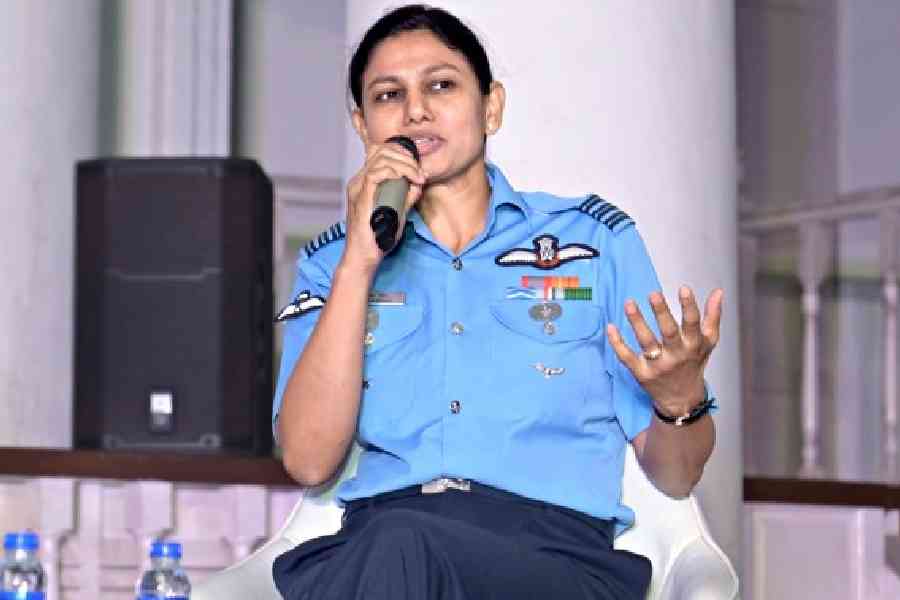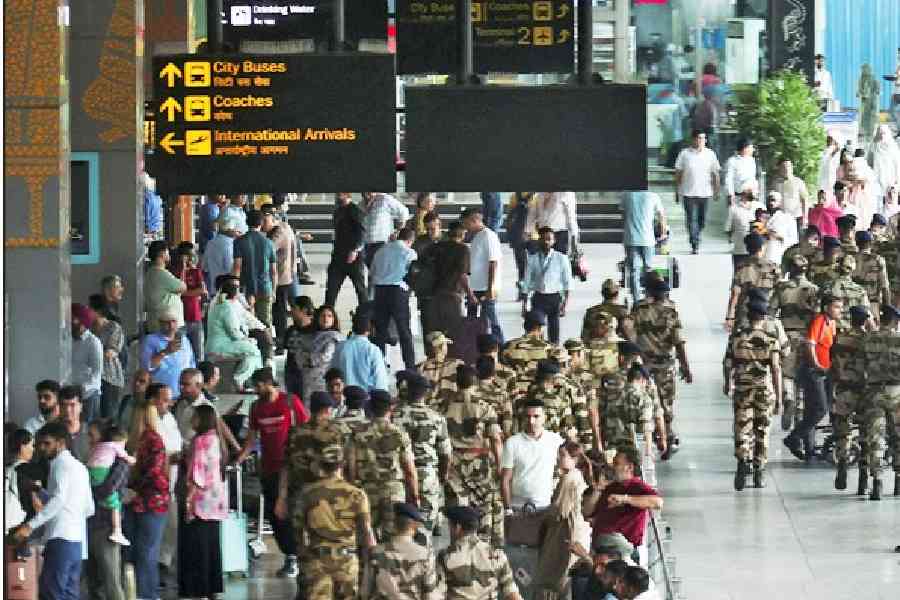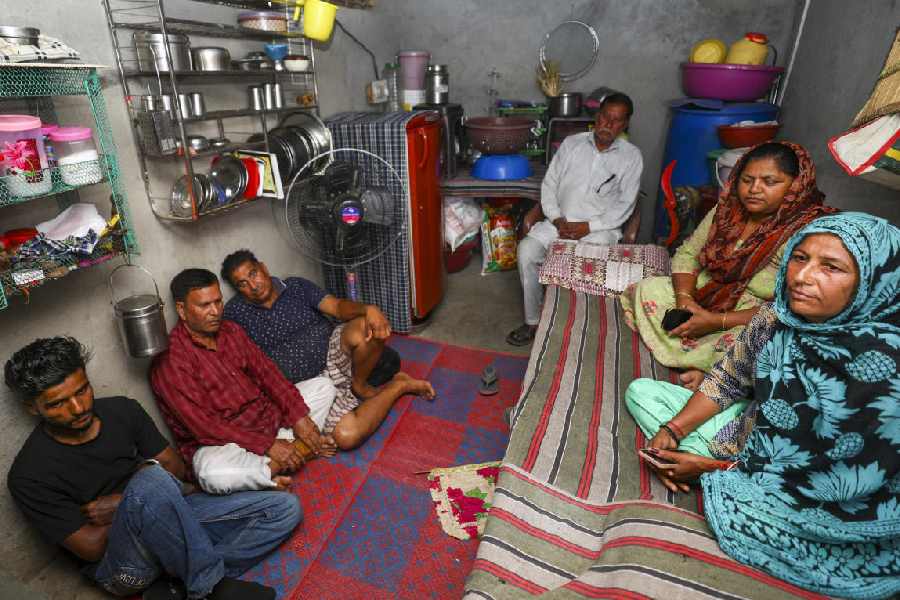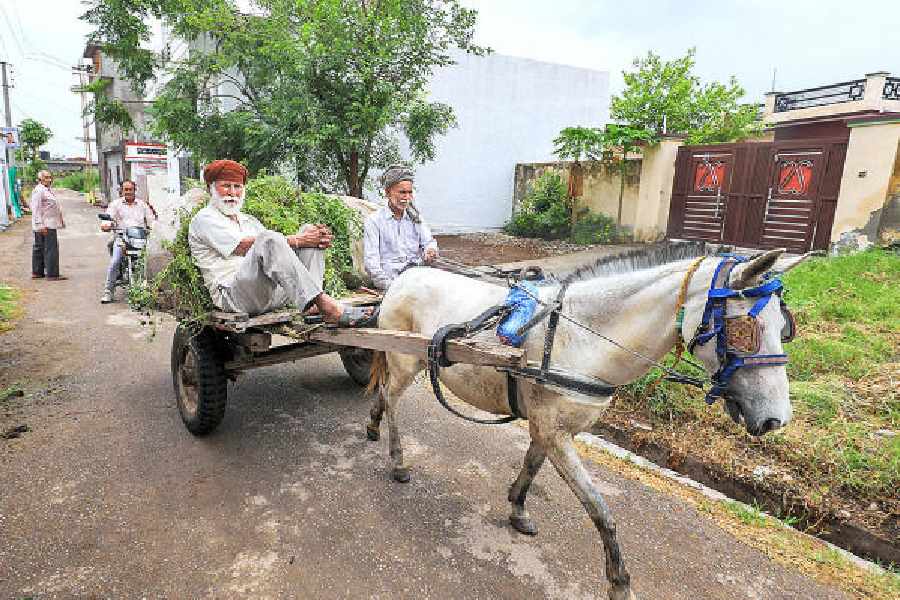 |
| Raring to go: Girls show off their handiwork at a mehendi class in Kherwadi, Mumbai, and (below) Yasmin Sheikh has been saving up to do her MA |
 |
The question didn’t really surprise Javed Anand. The Mumbai-based activist and journalist had finished addressing a Muslim women’s group meeting in Mumbai when he found a bunch of young girls waiting to talk to him. One of them, all covered up, came up to him and said: “I want to study aeronautics. Can you guide me, uncle?” The young girl’s dream confirmed Anand’s long held view that Muslim girls were more interested than boys in getting educated.
Earlier this week, the Deoband — the largest Sunni Muslim seminary after Cairo’s Al-Azhar — decreed that it was illegal for Muslim women to work. Not surprising, the community’s young girls — all raring to go — thought they could confide in Anand, the co-editor with wife Teesta Setalvad of a journal called Communalism Combat.
The Deobandis may not know about a soon-to-be-published 15-state study on the aspirations of Muslim girls aged 15-22 conducted by the Bharatiya Muslim Mahila Andolan. “A large number of girls said they would like to have access to vocational training and English medium education,” says Noorjehan Safia Niaz, a founder trustee of the group. Clearly, they want to study — and work. That finding is confirmed by the results of a Telegraph-GfK-Mode survey in Calcutta of 104 Muslim girls aged between 13 and 18 of their career aspirations (see graphics).
 |
The increasing emphasis on education in the Muslim community was visible at a recent meeting at the office of the Hukuk e Niswan Mahila Sangathana in the Kherwadi slum near Bandra in Mumbai, with activists strategising on ways to get access to government-sponsored educational schemes to improve the community’s educational prospects.
In the large room of the Sangathana office, Muslim men and women were vociferous about their desire to get their daughters educated. “I will let my daughters study up to whatever level they wish,” says the clean shaven Mohammed Nasim Khan, a corporation contractor.
So strong is the parental desire to educate their children that the pressure sometimes leads to tragedies. Ghulam Nabi Idris, a bearded social worker, carries in his file a suicide note in colloquial Hindi, written in the Roman script. The neatly penned note, on a single-lined page torn out of a notebook, he says, is by a Class IX Muslim girl.
In her opening line, the girl takes full responsibility for attempting to kill herself — for fear of being berated by her family on failing in her Class IX exam. In the presence of family members, she slit her wrists, and was rushed to a dispensary nearby. Idris, who was called in by the family to tide over the crisis, says the bleeding was stemmed in time, and the fatherless girl, a resident of Nagpada, Mumbai’s volatile Muslim ghetto which is one of the first areas to be set ablaze during communal riots, was saved.
Idris convinced the Nagpada girl’s family to go easy on her. “But for a poor family to see failure after struggling so hard to get their child educated is not easy. Therefore, such parents tend to be hard on the child,” he says.
There are other problems. At a mehendi class, run in Kherwadi (where young girls learn how to apply decorative henna to hands and feet — a profession gaining ground in recent years), most of the girls are Class VII dropouts. The reason they cite is that the municipal corporation schools in the locality do not have classes beyond Class VII.
Parents of these girls avoid sending them to co-educational private schools. For one, the fees are higher. For another, parents don’t want their daughters to study with boys.
Many lament the quality of education in municipal schools. A common refrain of the dropouts in the mehendi class is that they lost interest in studies because their teachers rarely turned up.
But one of the main reasons students drop out is that parents tend to marry off their daughters early. “Parents start getting anxious about getting them married when they turn 16,” says Idris. “They are generally married at the age of 17 or 18. By 20, they are considered too old for marriage.”
Clearly, for the many who want to educate their children, there are people in good numbers who would rather they didn’t. Naaz, mother of three daughters and a son, says her eldest daughter would have liked to have completed her graduation but had to give up in the first year of college as her in-laws did not approve of it.
Educated girls are in a bind as well. Not many families encourage their daughters to work. Mason Mushtaq Ahmed Siddiqui has six daughters, the eldest of whom is 22. All have dropped out of school. Since jobs are not an option, the girls stay at home, further straining their father’s meager finances. Siddiqui can’t wait to get them married, but the Rs 5,000-6,000 he earns a month simply won’t do. “I will need Rs 10 lakh to marry only three girls,” he says.
A few girls still manage to pursue their education against all odds. Yasmin Sheikh, a demure 21-year-old living in Mumbai’s industrial suburb of Andheri (East) with her parents and five siblings, has been saving up to do her MA, specialising in either Urdu or political science. Both she and her elder sister, 23, have so far succeeded in buying time from their parents, who are worried about their daughters’ unmarried status. The sisters give private tuitions at home — and hope to follow their dreams.
Far away, in Uttar Pradesh, a group of men in the Deoband seminary seeks to stifle their dreams. But like the young girl who wishes to study aeronautics, many would rather spread their wings and soar.










